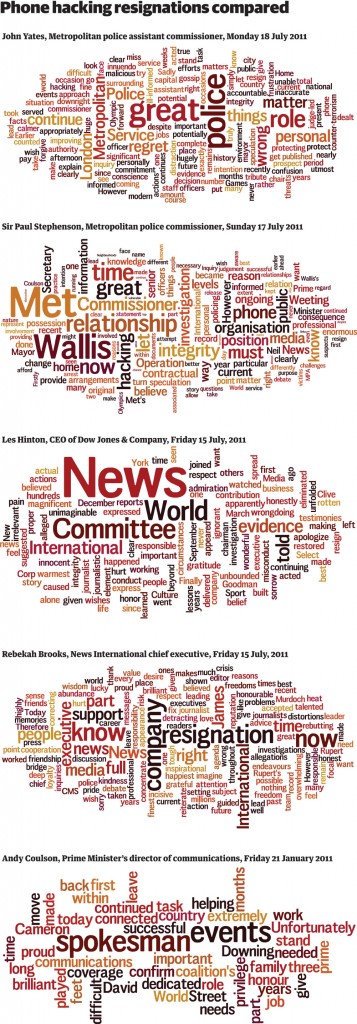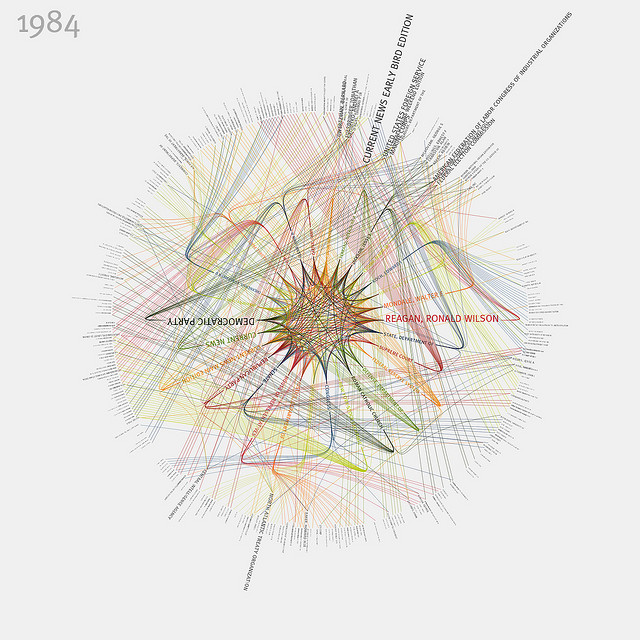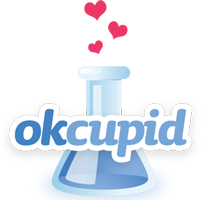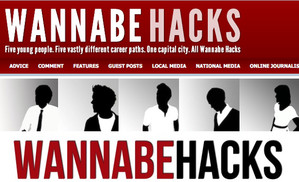Some people think that the future of journalism is uncertain. At the DJB we believe that it is exciting, more data-friendly and a scary bit challenging.
It’s not taking a big risk to say that most of it will happen online, but what is really interesting to witness is the very making of it…
Every Wednesdays, around midnight, while most people are scrabbling the internet or scrolling down their Facebook page in an hypnotic manner, hoping to fall asleep, a Twitter community actually works toward the future of online journalism.
#Wjchat is a weekly online conversation for web journalists which tackles all things content, technology, ethics, & business of journalism on the web.
While it doesn’t seem like the most interesting thing at first, a Twitter search for the hashtag #wjchat and a look at their profile will show you that 2,300 people already follow their tweets and that hundreds of them are posted every week on topics such as “innovation, culture and engagement”, “multi-media and visual storytelling”, or even “jobs and internships”.
Last week #wjchat was about the future of online journalism, hosted by the Chicago’s Tribune very own data guru, Brian Boyer. You can find out about what he does here.
Brian is also the person in charge of the very exciting PANDA project, winner of this year’s Knight News Challenge, and is said to revolutionise data journalism in a very practical way. (more on the PANDA project here)
You can follow #wjchat discussions in many ways but our favourites are via Tweetchat and on Google+.
And like everyone else, #wjchat is also on Facebook.
Dozens of people from around the globe joined the discussion last week. The archive of the #wjchat discussion is available on their website but we made a compilation of the best tweets that were posted that day. Enjoy and keep the discussion going in the comments!
2011-07-21T00:09:26Z
brianboyer (Brian Boyer)
A preface to tonight’s chat: “Take a set of encyclopedias and ask, ‘How do I make this digital?’ You get a Microsoft Encarta CD.”… #wjchat
2011-07-21T00:10:18Z
brianboyer (Brian Boyer)
“Take the philosophy of encyclopedia-making and ask…” #wjchat
2011-07-21T00:10:30Z
brianboyer (Brian Boyer)
“‘How does digital change our engagement with this?’ You get Wikipedia.” –Craig Mod
2011-07-21T00:11:21Z
brianboyer (Brian Boyer)
So! Journalism is a myopic business. We need to be more speculative, we need to think way beyond existing technologies. #wjchat
2011-07-21T00:12:00Z
brianboyer (Brian Boyer)
Someone’s gonna make the future, and it might as well be us. With that in mind, let’s begin! #wjchat
2011-07-21T00:13:21Z
wjchat (wjchat)
Q1 If Twitter is the telegraph that we’ll all laugh at when we’re old what’s the future? Crazy ideas, please. #wjchat
2011-07-21T00:17:42Z
TheChalkOutline (Scott Schwebke)
Another crazy idea- Computer programs that will be able to predict tomorrow’s news based on yesterday’s events #wjchat
2011-07-21T00:21:45Z
rynk (Stephen M Rynkiewicz)
#wjchat Q1 Twitter is a telegraph with better hardware. The future device? Embedded in clothes, notebooks, refrigerator magnets.
2011-07-21T00:22:15Z
wjchat (wjchat)
Q2 What are some examples of great digital-native journalism? @BrianBoyer will define “digital-native journalism” #wjchat
2011-07-21T00:22:17Z
brianboyer (Brian Boyer)
Preface for Q2: It seems to me that we’re still doing print journalism, and shoehorning it onto the web. #wjchat
2011-07-21T00:23:12Z
acnatta (André Natta)
Q2 data-visualization based pieces? #wjchat
2011-07-21T00:24:14Z
brianboyer (Brian Boyer)
A2: I can name two — Politifact and Everyblock. Both relate newsworthy information in a web-native fashion. #wjchat
2011-07-21T00:33:09Z
brianboyer (Brian Boyer)
I would like to take this opportunity to say STOP MAKING INTERACTIVE GRAPHICS. (usually, sometimes they’re awesome. sometimes.) #wjchat
2011-07-21T00:33:52Z
gteresa (Teresa Gorman)
@brianboyer can you expand on that? What’s one that really works? #wjchat
2011-07-21T00:34:33Z
webjournalist (Robert Hernandez)
@brianboyer Do you mean stop lame interactive graphics? Be more specific. #wjchat
2011-07-21T00:34:43Z
brianboyer (Brian Boyer)
A counterexample to my previous statement: http://nyti.ms/3dLjAe #wjchat
2011-07-21T00:37:08Z
schwanksta (Ken Schwencke)
@brianboyer Well, you (we) sometimes are. But it’s a big box! Perhaps: “Stop taking print graphics and adding animation” #wjchat
2011-07-21T00:39:44Z
wjchat (wjchat)
Q3 Reinterpreting Mod’s piece: Wrong q: How do we change journalism to make it digital? Instead: How does digital change journalism? #wjchat
2011-07-21T00:39:45Z
ivanlajara (Ivan Lajara)
I found this Arab Spring timeline by @guardian very useful http://bit.ly/pGsHbw #wjchat
2011-07-21T00:43:09Z
FatFighterTV (FatFighterTV)
A3 More accessible, fluid, and more sources – which means you have to be more careful and know which ones to trust. #wjchat
2011-07-21T00:43:22Z
brianboyer (Brian Boyer)
A3: When everyone with a mobile is a source, reporter, and publisher… I think a lot is gonna change. #wjchat
2011-07-21T01:14:00Z
wjchat (wjchat)
LR3 What sources (books, blogs, anything) do you recommend for fellow future-makers? #wjchat
2011-07-21T01:17:37Z
brianboyer (Brian Boyer)
LR3: Attend your local open-source user groups. Start a Hacks/Hackers chapter. #wjchat
2011-07-21T01:20:18Z
wjchat (wjchat)
Q6 What do you see other mediums doing online that journalism can steal? Give examples (Tools, ideas, etc). #wjchat
2011-07-21T01:22:57Z
knowtheory (Ted Han)
@wjchat #wjchat Steal the open source development model. engage users, foster their interest & support, and turn them into collaborators
2011-07-21T01:27:02Z
wjchat (wjchat)
Q6B What technological advances that are coming are you most excited about harnessing for journalism? #wjchat
2011-07-21T01:27:39Z
roeberg (Roei Eisenberg)
A6B: Augmented reality, w/o a question. #wjchat
2011-07-21T01:29:35Z
knowtheory (Ted Han)
@wjchat #wjchat q6b) better analysis and workflow tools. I want systems that help me understand big chunks of info.
2011-07-21T01:30:28Z
roeberg (Roei Eisenberg)
A6B: Also, making Excel easier and more intuitive. We need to be able to crunch numbers w/o hassle. #wjchat
2011-07-21T01:33:05Z
wjchat (wjchat)
Q7 So! You’re not a programmer? So what. What’s your role to help bring journalism into the future?
2011-07-21T01:34:53Z
DLoxLA (D Lock)
A7: Find someone who is a programmer and team-up. #wjchat #sharingIScaring
2011-07-21T01:41:27Z
knowtheory (Ted Han)
@wjchat #wjchat BonusQ) interested ppl should go checkout the @knightmozilla MoJo project and #moznewslab experimenting w/ new ideas
















